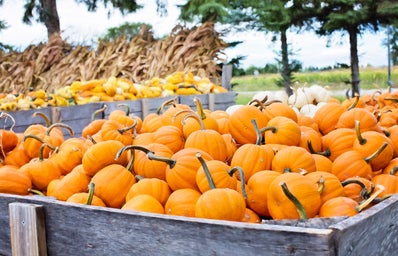Photo courtesy of Pexels
Halloween has been a big part of my life since I was a kid. My family has always gone all out and made the most of spooky season. We have always decorated the house as soon as it becomes October, thrown big Halloween parties, and scared the neighbors. One year I even had a Halloween party for my birthday… in December. Obviously, I adopted my dad’s love for all things scary and creepy, but Halloween is so much more than that now.
When I was nine, my family discovered Paganism. It was new and welcoming to my parents who never felt comfortable or attracted to the Abrahamic religions. My parents never forced us into it, only educating us as they educated themselves and letting us make our own decisions. I was automatically attracted to it. It just made sense to me, more than Christianity and God ever did.
I really dived into exploring my spirituality when I was twelve and we moved back to Texas. After living in relatively more liberal areas, Texas was a culture shock. My brother (who has never been religious) who was eight at the time, was called a devil worshiper because of a bumper sticker on my mom’s truck. I was constantly told I was going to hell and that, later in life, it would affect my relationships. This didn’t stop me. Religion and spirituality are supposed to be comforting and Paganism made me feel like I belonged, even with the backlash.
The Pagan Sabbat Samhain (pronounced sow-in and more popularly known as Halloween) has a long history that I could babble on about for ages, but I will spare you the details and give a basic run down. Samhain is the Celtic New Year and the summer’s end festival. The celebration starts at sundown and strives to honor the dead. It is also a great time to use divination and seek insight about the future since the veil between the worlds is at its thinnest. It wasn’t until the Church renamed Samhain to All Hallows Eve and applied the concept of Hell that Halloween was considered “evil” or “scary.” Even with the Church’s intervention, many things people do to celebrate Halloween today came from Pagan beginnings. That being said, pagans still dress up, eat festive foods, and carve pumpkins. Even trick or treating derived from Celtic traditions.
The Celts believed that on Samhain, the dead could pass through the veil and visit the living. They did not believe in the concept of Heaven and Hell, so they did not fear their dead, but rather honored them. They would leave out offerings of food for their visiting ancestors. Even though the Celts didn’t believe in Demons or the like, they did believe in resentful faeries. They thought that many of these mystic beings lived between the worlds and when the veil was at its thinnest, they were at their strongest. They would cause mischief and trouble. If you take these two aspects and put them together, you get Trick or Treat. The Celts would also go from house to house, in what was known as “House-begging,” which led to the American adaptation of Trick or Treating. Traditionally, costumes and masks were used to scare off evils, like the faeries, but it was also believed that it brought the wearer closer to the spirit world.
Jack-o-lanterns were originally carved apples and vegetables that were used as safe candle holders in the middle ages. Pagans believe that if you leave a lantern by your front door and one by your back door, they will guide the dead through your house allowing them to receive their offerings without getting lost or trapped on this side of the veil. They are also used to ward off evil.
Photo courtesy of Pexels
Today, people around the globe have their own adaptations of these ancient traditions and Pagans are no different. Each individual practicing witch and each coven or community celebrates differently. The community I belong to at home has someone different do a ritual every year, so it is always a new and exciting experience, but since going away to college, I have had to find my own ways of celebrating Samhain and honoring my ancestors.
Like everyone else, I go to Halloween parties and dress up with my friends. However, I like to set up a little alter for my loved ones who have passed. I set up their photographs and leave little treats as offerings. Since candles are not allowed in the dorms, I use electric tea lights. While this is not as powerful as real candles, the act is powerful enough. Just acknowledging the dead on this day is powerful in itself. Whether you prepare a Feast of the Dead or construct an altar, or participate in a ritual, letting your ancestors know that you remember them is what Samhain is about.
Samhain is an important Sabbat to Pagans and is a really fun holiday in general. I hope that by sharing some of my experiences and a little bit of history, it helped you understand what Halloween is all about or just supplied you with some fun facts to share with your friends.



